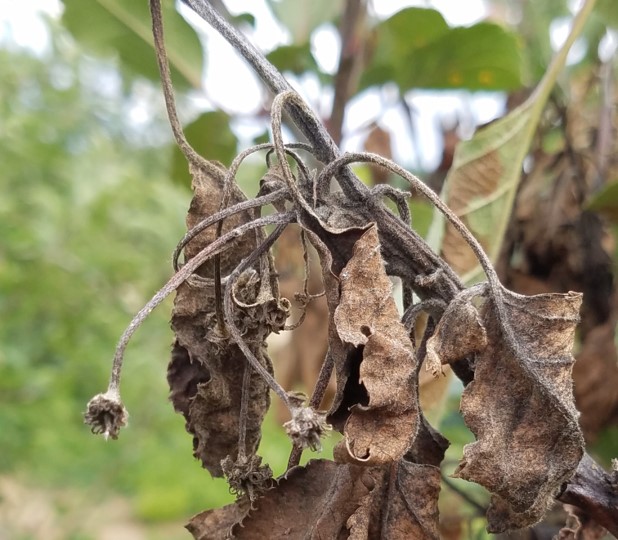Apple Alert: Blossom Blight Infection: April 14, 2021
go.ncsu.edu/readext?789014
en Español / em Português
El inglés es el idioma de control de esta página. En la medida en que haya algún conflicto entre la traducción al inglés y la traducción, el inglés prevalece.
Al hacer clic en el enlace de traducción se activa un servicio de traducción gratuito para convertir la página al español. Al igual que con cualquier traducción por Internet, la conversión no es sensible al contexto y puede que no traduzca el texto en su significado original. NC State Extension no garantiza la exactitud del texto traducido. Por favor, tenga en cuenta que algunas aplicaciones y/o servicios pueden no funcionar como se espera cuando se traducen.
Português
Inglês é o idioma de controle desta página. Na medida que haja algum conflito entre o texto original em Inglês e a tradução, o Inglês prevalece.
Ao clicar no link de tradução, um serviço gratuito de tradução será ativado para converter a página para o Português. Como em qualquer tradução pela internet, a conversão não é sensivel ao contexto e pode não ocorrer a tradução para o significado orginal. O serviço de Extensão da Carolina do Norte (NC State Extension) não garante a exatidão do texto traduzido. Por favor, observe que algumas funções ou serviços podem não funcionar como esperado após a tradução.
English
English is the controlling language of this page. To the extent there is any conflict between the English text and the translation, English controls.
Clicking on the translation link activates a free translation service to convert the page to Spanish. As with any Internet translation, the conversion is not context-sensitive and may not translate the text to its original meaning. NC State Extension does not guarantee the accuracy of the translated text. Please note that some applications and/or services may not function as expected when translated.
Collapse ▲The risk of a blossom blight infection event is HIGH for Henderson County (NC) for Wednesday, April 14. The risk of a blossom blight infection event is EXTREME for Polk County (NC) for Wednesday, April 14. The risk of a blossom blight infection event for Moravian Falls area is HIGH for Wednesday, April 14.
- High Risk: If there are open blossoms in your block, a high risk of a blossom blight infection event means that 2 of 3 requirements (see Bloom Disease Update ) are satisfied for blossom blight to occur. A preventative streptomycin or other bactericide application should be considered prior to a wetting period (dew or precipitation).
- Extreme (“Infection”) Risk: If there are open blossoms in your block, an extreme risk of a blossom blight infection event means that 3 of 3 requirements (see Bloom Disease Update) are satisfied for blossom blight to occur. A preventative streptomycin or alternative bactericide application should be made prior to a wetting period (dew or precipitation).
Additional Information on Blossom Blight Forecasting
All unprotected, open, and intact blossoms are susceptible to fire blight caused by the bacterial pathogen, Erwinia amylovora. Blossom blight is initiated during the spring as the pathogen, overwintering in cankers, begins to ooze and is disseminated to open flowers, primarily by rain splash or by insects. Upon arrival to an open blossom, bacterial multiplication occurs on the stigmatic surface of the flower, provided that enough heat units have accumulated to support reproduction. At this point the flower is not considered infected and the presence of the bacteria on the stigmatic surface presents an ideal time for agrichemical management. Even the infection of a few blossoms can set the stage for catastrophic losses later in the season, due to the systemic movement of the pathogen through xylem tissue.
- Flowers must be open and intact: Once the flower is in petal fall it becomes resistant.
- The epiphytic inoculum potential (EIP) must be reached: The accumulation of a certain number of heat units during bloom must be reached to support bacterial multiplication of the flower’s stigmatic surface. For MaryBlyt, any EIP over 100 satisfies this requirement.
- A wetting event such as dew or rainfall greater than 0.01 inches: This requirement enables the movement of the bacteria from the stigmatic surface to the flower nectarthodes where infection occurs.
- Average daily temperature must be above 60F: Increases bacterial multiplication rate on stigma as well as migration rate to the nectarthodes.



